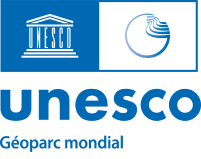After six years, the European LIFE Avaloirs project, led by the Park and Geopark in collaboration with the Département de la Mayenne, has come to an end. It is now time to review the actions taken, the results achieved, and to better understand the future outlook.
A long-term project
Since 2014, with support from the Région Pays de la Loire, and national government services, the Park has been working with the Département de la Mayenne on an ambitious conservation program to protect heathlands, peat bogs, and remarkable bird species found on Mont des Avaloirs and the Corniche de Pail.
These habitats, once relatively common in the area, had become rare. They also serve as refuges for several threatened species, such as the Hen Harrier.
After a lengthy selection process, the LIFE Avaloirs project was approved by the European Commission in 2018.
Thus, complementing the actions already in place through the Natura 2000 program and the Department’s Sensitive Natural Areas policy, a broad restoration program was implemented over six years (September 2018 – April 2024), with concrete actions beginning as early as September 2018.At the same time, the project aimed to raise awareness and inform local stakeholders so they could discover and appreciate the natural wealth of their everyday environment.
The habitats and species targeted by the LIFE Avaloirs Project
HeathlandsVegetation formations without trees (at least 50% dominated by shrubs), typical of humid temperate climates, found on siliceous soils. |
|
 |
Peat BogsWetlands characterized by the gradual accumulation of peat, a soil with a very high content of organic matter of plant origin, little or not decomposed. |
 |
European NightjarA bird species from the Caprimulgidae family. Like all nightjars, it is active at dusk and at night. |
 |
Hen HarrierA diurnal bird of prey belonging to the Accipitridae family. |
Objectives of the LIFE Avaloirs Project
KNOW AND UNDERSTAND
- Preliminary studies and development of action plans.
ACT
- Restoration and maintenance of heathlands, scree slopes, and peat bog areas.
- Rehabilitation of areas to benefit the Hen Harrier.
- Assessment of socio-economic impact.
- Monitoring of plots after restoration and maintenance work.
COMMUNICATE
- Implementation of awareness and information campaigns.
- Education and training of local stakeholders and users.
To meet these objectives, numerous actions were carried out over the six-year period: species studies and monitoring, tree felling and logging, removal of bracken (Pteridium aquilinum) through stripping and scraping, land acquisitions by the Department of Mayenne, public and school awareness efforts, and assessment of the impact on landscapes and biodiversity.
Results that exceed the original objectives:
- 130 hectares of heathland restored
- 4 hectares of peat bogs restored
- 8 hectares of meadows restored
- 8,507 tonnes of wood cut and repurposed, equivalent to 23,295,454 liters of fuel oil saved
- 59 hectares acquired by the Department of Mayenne
- 84,159 people reached through awareness efforts
- 249 participants in public events
- 258 students engaged through two educational projects
- 1,005 species identified in the area
What’s next?
Ensuring the long-term continuation of these efforts across all areas of focus was planned from the outset of the LIFE Avaloirs project. While the results are promising, it is essential to continue the efforts so that heathlands and peat bogs regain their full role in the region.
A new action plan has been developed, structured around three main pillars:
-
Habitat management, with ongoing maintenance work to refine previous efforts
-
Land acquisition, which will continue with the Department to preserve and restore areas of heritage value
-
Public awareness, through diverse initiatives and the upcoming creation of a dedicated discovery trail
These actions will be supported by Natura 2000 funding, the management of regional nature reserves, the Department's Sensitive Natural Areas policy, and other current and future biodiversity initiatives led by the European Union, the French government, or the Région Pays de la Loire.
The LIFE Programme
The LIFE programme is a financial instrument of the European Commission entirely dedicated to supporting projects in the fields of environment and climate. It is open to both public and private project leaders and aims to promote and fund innovative initiatives related to, for example, species and habitat conservation, soil protection, air or water quality improvement, waste management, and climate change mitigation or adaptation.




